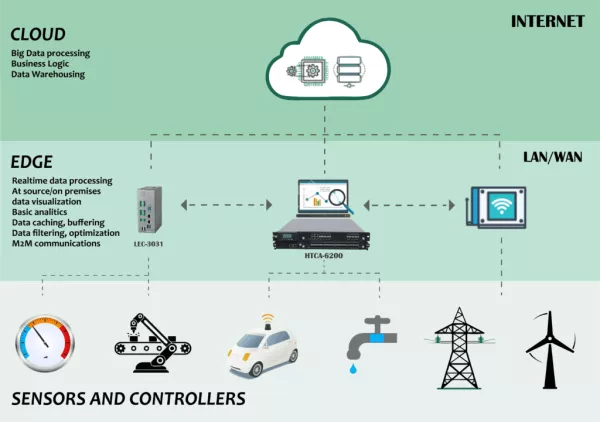Top 10 Public Sector Digital Technology Trends in 2022
If you’re one of the regular people, you may not think about tech trends too much – except when your devices run out of storage or that new app update affects your phone. Once in a while, you may think about how much you depend on certain apps on your phone and the available services.
Even if you’re not a tech expert, it’s essential to stay aware of the latest digital trends to future-proof your business and prepare for changes in how we live and work. This blog post will look at the top 10 public sector digital technology trends for 2022.
So whether you’re a government official, NGO worker, or small business owner, read on to find out what to expect in the latest public sector technology trends in the next five years!
Top Ten Public Sector Technology Trends in 2022
As we go further into the 21st century, new technologies are emerging at an unprecedented pace. So what’s on the horizon for public sector technology in 2022? Here’s our list of the Top Ten Public Sector Technology Trends to watch out for:
1. Personalized Service
Customers who have trouble with their technology devices can turn to you for help. A truly personalized service goes much deeper than simply being able to greet individual customers by name and take care of any issue (although this is an important step).
Moreover, technology affects the customer experience and has made users feel more comfortable interacting online.1 Personalized algorithms provide tailored recommendations for what they should do. As a result, consumers are also starting to expect this same level of personalization from public services!
What consumers want from companies isn’t just someone who solves one problem. But rather somebody knowledgeable about all aspects involved in resolving issues.
It means utilizing CRM platforms, so connections between agents/customers are easily achievable through seamless integration into systems already built-in in most modern phones or tablets!
98% of marketers already agree that personalization helps to advance customer relationships.2
Another aspect of personalization is to keep personal data such as biometric information and passwords safe, making identity management critical now more than ever.

2. The Proliferation of 5G networks
5G is the next generation of transformative wireless technology that will change how we live, work, and play. It has been promised to revolutionize every facet of society, such as health care services, by allowing patients to remotely monitor their conditions, or law enforcement, where officers can wirelessly communicate while chasing criminals.
But it also holds potential beyond these two examples—for example, providing faster mobile data speeds, which could help people who are disabled stay connected through arm’s length payments via smartphones without having any difficulties accessing webcams set up around homes. 5G will help digital transformation in government and the public sector; as new smart cities are created.
5G is expected to revolutionize global communication, leading to a hyper-connected society. This is easily proved by its market, which is projected to reach $667.90 billion by 2026, with a CAGR of 122.3% from 2021-2026.3 .
3. Increased use of AI and ML
Human and machine collaboration is the way of the future. The need for human augmentation with machines will grow as we face increasingly complex problems in our world. Still, it can safely be done if used wisely by balancing what each party offers to this relationship. AI (Artificial Intelligence) and ML (Machine Learning) opportunities for enhancements include learning or adapting more quickly than we can on our own.
Most importantly, it’s vital when dealing with complex problems requiring an extra set of eyes.
Whether they are big picture concerns like disaster preparedness and budget optimization or minor tweaks within your organization, this way, you don’t have hundreds if not thousands working at once while still trying to provide excellent service.
By 2023, 40% of infrastructure and operations in large organizations plan on using AI-powered augmented solutions to free up the busy IT staff for more advanced work.4 .

4. Hybrid Life
We live in a world that was once only possible on paper and digital platforms. The blended home office space has become commonplace, so there’s no going back for those who embrace this new way of life- they’re here to stay! This change should help us understand how to use digital technology in the public sector in partnership with our communities’ needs during digital transformation.
Virtual meetings, mobile device inspections, and medical consultations are just ways businesses are staging in the competitive market today.

5. Smart Society
Wearables are now used for everything from virtual work meetings, fitness tracking, and even remote medication administration. The market has registered a CAGR of 13.8% from 2021 to 2028.5 The near future may have discrete devices that are likely to be accepted by older adults as part of assisted living systems.
As technology advances, our physical spaces are becoming increasingly data-driven.
The demand for residential wearables will increase as they become able to communicate with other devices and create an “internet of us” that provides increased insight into the environment.
6. Data Sharing with Trust
Recent months have proved that the general public is starting to understand data sharing.6 It’s vital for organizations that handle sensitive information to provide clarity on what value they’re providing with their products or services.
Having high standards in place helps ensure transparency and confidence among consumers about how others might use their data without permission.
These questions become even more pressing when considering blockchains’ ability to use limited resources efficiently.
It could mean greater efficiency in administering digital transformation in government and the public sector while reducing associated costs.

7. Widespread Cloud Service
With the public sector tech, cloud services will simplify and automate what is increasingly complex. This year’s key enabler for this endeavor is the software-driven nature of clouds, ensuring resilience, continuity, and security baked into them.
Cloud services also have other benefits such as reduced IT cost, flexibility and scalability.
8. Modern Democracy
We live in a world where citizens are no longer limited to one space but can engage with information and views from many different sources. It has been seen especially through social media and actively building an online community that provides the opportunity for deeper engagement than ever before.7 Besides, it includes observing sentiment among those who may not have previously had a chance or desire.
For instance, young voters whose lack of turnout signals that they need more engaging technologies if we want them involved at all levels. Experts claim that youngsters can make an effective change in the climate crisis.8
The key challenge here will be ensuring every voice gets heard rather than just loud ones.
9. Edge Computing
For fast data processing, edge computing is quickly becoming the foundation for many innovations.9 In the future, we’ll see an increased focus on edge computing to save time and resources.
Edge computing is the new wave of data management.
By 2022, we can expect edge technology—including 5G and cloud-native systems combined—to increase digital technology in the public sector throughout society and use AI locally all at once!

10. Growing Emphasis on Data Security
COVID-19 was a wake-up call for many governments who realized they needed to modernize their infrastructures. In the past year, we saw increased cyber attacks as hackers take advantage of the government’s weakened security measures and remote working environments, but it doesn’t have to be this way!
Fortunately, tech trends such as enterprise Identity and Access Management (IAM) solutions exist.10
These can help build trust capabilities so you’re not left vulnerable at any level of your supply chain.
Check it out: Zyxware Technologies has been selected among the Top New Jersey IT Services Companies by Designrush
Conclusion
The future of technology is always hard to predict, but these upcoming tech trends are the need to prepare better. In 2022, the public sector will use AI to predict crimes and monitor social media. Augmented reality (AR) in governmental tasks is also expected to rise exponentially- with AR being used for everything from health care to farming techniques.
Governments worldwide are already implementing new technologies like blockchain or cryptocurrencies into their systems to improve efficiency and transparency while reducing fraud.
With these latest public sector technology trends, the future is looking bright for public sector digital technology. We expect significant changes over the next decade with some of the world’s top experts.



